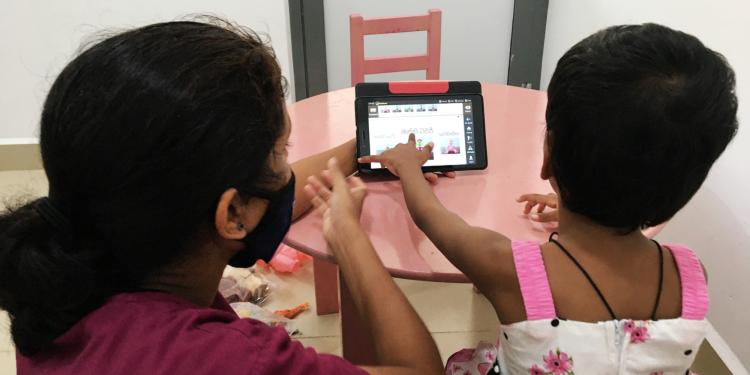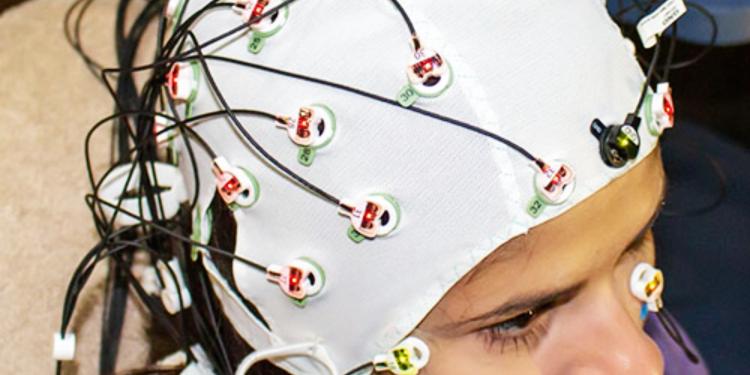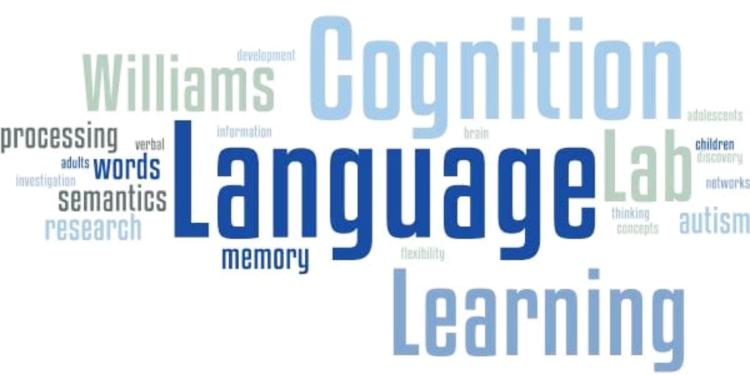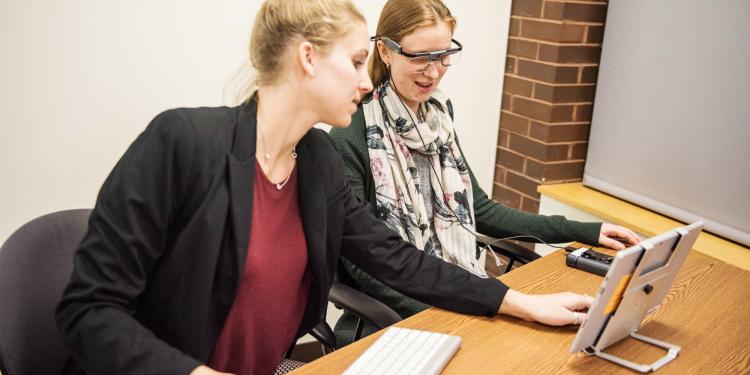Research in Language and Language Disabilities Across the Lifespan
Using the tools of cognitive science and neuroscience
CSD researchers study language and language disabilities across the lifespan utilizing advanced technologies such as EEG, eyetracking, fNIRS systems, and fMRI. Through collaboration with colleagues in neuroscience/neurology, psychology, and linguistics, we are able to take an interdisciplinary approach to our research.

Augmentative and Alternative Communication (AAC) and Developmental Disabilities Laboratory
Principal Investigator: Kathryn D. R. Drager, Ph.D., CCC-SLP
Studying AAC, Autism, Intervention with Individuals with Severe Disabilities, Low-Resource Communities and Contexts
This lab houses projects that seek to improve the lives of individuals with disabilities of all ages, with an emphasis on school-age children, adolescents, and adults with developmental disabilities, including autism. A particular focus is on daily experiences of individuals and families, and on interventions that can be implemented within daily life.
Studies in this laboratory also examine applications for people within low-resource communities, where technological solutions may not be readily available, including in low- and middle-income countries. The lab is equipped with digital audio and video recording and editing capability.

Child Language Development Laboratory
Principal Investigator: Carol Miller, Ph.D.
Studying Developmental Language Disorder, Cognitive Processes, Speed of Processing
The Child Language Development Laboratory conducts research on the development of language in typical and non-typical ways in young children, adolescents, and adults. We are particularly interested in how language relates to memory, attention, and speed of processing. We use multiple methods, including published tests, computer-based games and tasks, and electroencephalography.

Cognition and Language Learning Lab
Principal Investigator: Diane Williams, Ph.D., CCC-SLP
Studying Autism, Language Processing, Memory, Cognitive Neuroscience, fMRI
Our lab is interested in learning more about cognitive and linguistic processing in children and adults with challenges in learning and using spoken language.
The work of the lab related to autism is based on a model of autism as a neurologically-based difference in Complex Information Processing. Ongoing research in this lab, using neuropsychologic and linguistic measures, includes investigations of how individuals with autism who are successful learners process information.
We are also interested in individuals with other forms of developmental language disorders. Therefore, we are surveying adults with language learning difficulties, teachers, speech-language pathologists, and parents to learn more about their lived experience of the assessment process. Another ongoing project is investigating structural and functional neurological differences in adults with Down syndrome.

Laboratory for the Study of Visual Supports in Communication and Education
Principal Investigator: Krista Wilkinson, Ph.D.
Studying communication/language in developmental and intellectual disabilities, visual-perceptual processes, eyetracking
This lab seeks to improve the effectiveness of visual supports used in communication intervention for individuals with developmental and intellectual disabilities. Many such children use visual schedules, calendars, or communication books that have pictures of upcoming activities, desired foods, friends, or favorite social activities. The studies in this laboratory examine how systematic consideration of the construction of these displays (placement and color of the symbols on the aid, for instance) might influence functional communication or learning outcomes. The research includes basic studies of visual processing conducted within the laboratory as well as applied instructional procedures embedded within storybook reading activities that take place in children’s homes or schools. Future planned studies include neuro-imaging studies that will allow us to examine brain responses to the visual communication symbols presented on the displays.

Semantics, Aphasia, and Neural Dynamics (SAND) Laboratory
Principal Investigator: Chaleece Sandberg, Ph.D., CCC-SLP
Visit the lab website | Facebook | Twitter
Studying Semantic Treatment, Neuroplasticity, and Health Disparities in Aphasia
Research in the Semantics, Aphasia, and Neural Dynamics (SAND) Laboratory focuses on finding ways to improve the lives of individuals with acquired language disorders, with a primary interest in aphasia. Aphasia is a language disorder that occurs after a stroke or other acquired brain injury to the language dominant hemisphere of the brain.
We are especially interested in ways to a) optimize behavioral therapy through the application of cognitive and linguistic theories; b) promote neuroplasticity by understanding the cognitive and neural underpinnings of successful therapy; and c) alleviate healthcare disparities by improving accessibility to optimized therapy. We use neuroimaging (fMRI, EEG) to help us understand what changes are taking place in the brain during successful therapy and how we can enhance these processes.
We are also interested in a) how aging affects the way we interpret the cortical reorganization that occurs during language recovery; b) how to improve the quality and accessibility of treatment for bilingual aphasia; and c) how to improve access to mental health services for people with aphasia.



